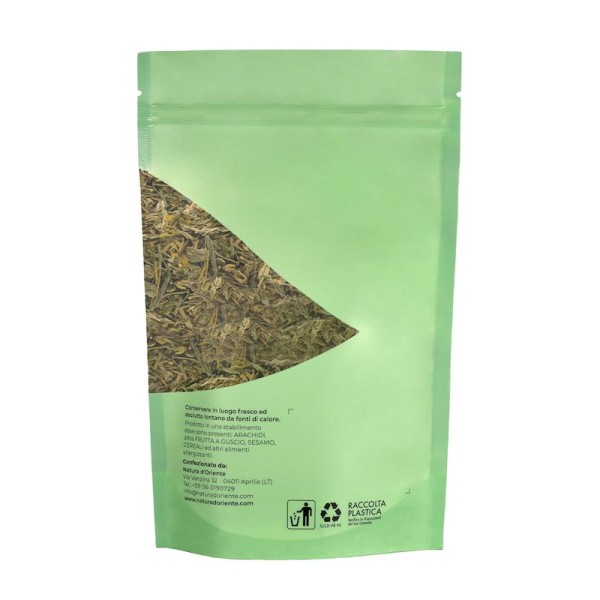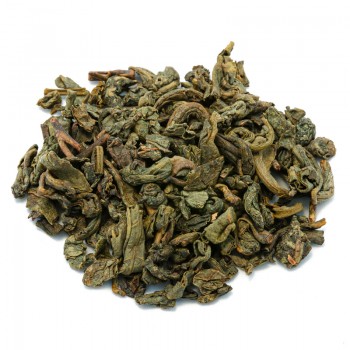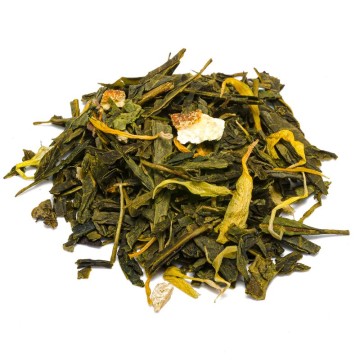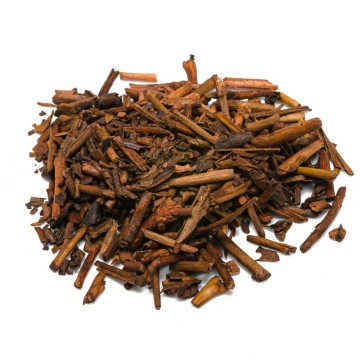Green tea gives our body beneficial properties, being a great source of antioxidants, with draining and refreshing effects.
Sometimes tea is avoided due to its theine and caffeine content, which is why a version of decaffeinated tea is excellent for taking on the beneficial virtues without encountering the stimulating effects of theine on the nervous system. Without damaging the natural aroma and flavor of Sencha, gentle decaffeinating procedures are used.
Decaffeinated Sencha green tea: properties and benefits
Due to the different processing methods of the leaves are processed, different types of tea and different types of substances are born. Some, called stimulant alkaloids, are theine and caffeine, which show the same chemical composition and can be considered the same thing, the same active ingredient with the same effects. However, tea and coffee do not give the same reactions, given that the concentration and quantity of these molecules in tea is lower than in coffee, even if much depends on the processing of the products, the type of tea and the infusion time. In green tea, however, the amino acid theanine and antioxidant polyphenols compensate for the excessive effect of the alkaloids, compared to black tea. The Sencha gives a small content of caffeine and theine, which apparently can help concentration without overexciting the nervous system, indeed with relaxing results. In any case, this decaffeinated version of Sencha green tea completely eliminates theine.
It goes through a process that removes the alkaloid, without changing most of the natural composition. You will be able to avoid the effects of theine and caffeine, which could cause problems by stimulating the nervous system and causing agitation, increased heart rate, headache, increased blood pressure. In fact, the theine molecule affects our body with a process of regulation of the nerves, leading to a flow of blood to the muscles, but also to the release of glucose from the liver. For people with a caffeine sensitivity or hypertension, this decaffeinated version allows you to get the healthful benefits of green tea, without the negative effects. It's also worth mentioning that caffeine does raise blood pressure slightly, so if this is something you've been having trouble with, a switch to decaf may actually be better for you than drinking caffeinated green tea!
However, decaffeinated Sencha retains the theanine, a chemical that helps reduce mental stress and relaxes. Despite a small reduction in chemical compounds, this decaffeinated Sencha infusion still provides the body with a fair level of natural antioxidants. Provides active ingredients such as flavonoids, catechins, polyphenols, EGCG (epigallo-catechin-gallate), vitamin C. Antioxidants help prevent the damage that free radicals cause to our cells, also reducing inflammation in the body. Free radicals are unstable molecules that form when we are exposed to harmful factors such as smoke, overly sophisticated foods, air pollution, excess alcohol, drugs. The radicals cause a process called "oxidative stress," which is thought to play a role in cell degeneration.
For this reason, antioxidants that can counteract the damage of oxidative stress are precious. In addition, the catechins contained in green tea are studied for their fat-burning effect. The polyphenol EGCG acts on substances called catecholamines, as an agent that favors the increase in body temperature and acceleration of the metabolism. By producing heat in fat and muscle tissue, it increases the oxygen content and initiates fat burning. It releases energy in the body, and avoids accumulations in fat. A possible resource to promote weight loss, combined with a correct diet. Removing theine, however, can slow down the tea's ability to burn fat, so it may be helpful to increase your consumption by an extra cup a day. Green tea, even decaffeinated, encourages a draining effect in the body (the expulsion of liquids) by counteracting water retention and swelling in some areas of the body. The nutritional benefits of this green tea are also aimed at digestion, since it promotes the assimilation of food, regulating intestinal transit.
Origins and History of cultivation
Sencha is one of the oldest teas in the world. It comes from the same plant used to make black tea, a leafy shrub called Camellia Sinensis. The slight difference between the two teas is given by the fermentation or oxidation process. This procedure varies in green tea, it is more delicate since the leavesare oxidized for a shorter time. Furthermore, the Sencha tea leaves come from cultivations in direct sunlight, and are selected from the first and second harvest among those tender and of superior quality.
Normally, Sencha is prepared using steamed whole leaves for just under a minute, in order to avoid oxidation. They are rolled and dried, to then be infused in water. The result is a golden and greenish tea, with a refreshing and sweet aroma. This type of tea is very popular in Japan, where about 80% of production comes from. It was introduced to the Rising Sun by Chinese Buddhist monks in the 15th century. Over time, it was highly valued by samurai and feudal nobles, entering the Japanese tea ceremony. Even today, Sencha green tea is used for infusions, but also for cooking and as an ingredient in cosmetic products.
Traditional Chinese medicine recognizes its benefits, including its relaxing qualities on the mind and body. We know different varieties of Sencha green tea that are cultivated to obtain different flavors and effects. Shincha tea comes from the first harvest of sencha in spring among the youngest green tea leaves. The Kabusecha variety, grown in full shade for 7-10 days, gives a slightly sweeter flavour. The Gyokuro variety, similar to Kabusecha tea, but is shaded for 20 days. You get a much sweeter tasting brew, Japan's most expensive green tea. The detaination process can take place in different ways. In the past, manufacturing procedures were used through the use of chemical solvents. For some time now, the evolution of detainerization processes has mainly led to the use of natural methods. The leaves are tested for theine content using water, steam and carbon dioxide extraction.
Plant and flowers
The tea plant, Camellia Sinensis (sometimes called Thea sinensis), is native to East Asia and belongs to the Theaceae family. It represents a genus that brings together about 250 species of evergreen trees and shrubs. It can reach 9 meters in height, but is usually grown reduced to a low bush to facilitate harvesting.
The plant is often pruned to encourage the development of young tea leaves. Gives fragrant, yellow flowers, about 4 cm wide. Nutritional values of decaffeinated green tea This tea contains good amounts of antioxidant polyphenols, including the important EGCG epigallocatechin gallate. Does not contain the theine alkaloid. Furthermore, it makes available vitamin C, group B vitamins (thiamin, riboflavin, niacin), and traces of some minerals such as iron, magnesium, potassium, zinc.
How to prepare decaffeinated Sencha green tea
Sencha green tea is obtained by placing about 3-5 grams of the infusion preparation in a cup (250 ml) with water at 80 °C. Leave to infuse for 2 to 3 minutes, before drinking the decaffeinated tea infusion. Add honey or sugar, if desired.
Sencha decaffeinated green tea: side effects and contraindications
Green tea, even if theine-free, can cause side effects if the recommended doses are not respected. Deteining does not completely eliminate theine, even if it does reduce it greatly. Individuals with severe theine (caffeine) sensitivity should pay attention to the doses of decaffeinated tea. Caution is advised in the doses for pregnant and breastfeeding women.









 No reward points for this product.
No reward points for this product.
![Green Tea Sencha Kombucha [Natura d'Oriente]](https://www.naturadoriente.com/3380-home_default/-green-tea-sencha-kombucha-.jpg)

![green tea hemp mango [Natura d'Oriente]](https://www.naturadoriente.com/3381-home_default/green-tea-mango.jpg)












